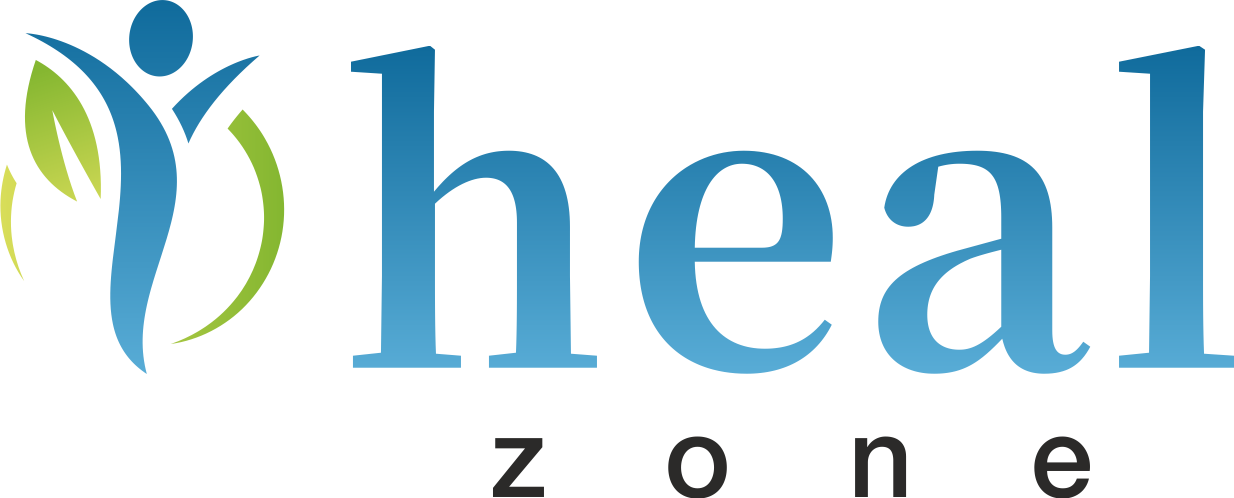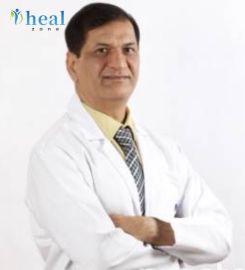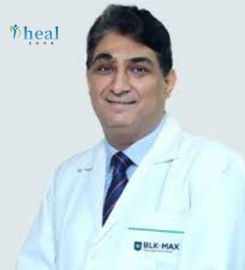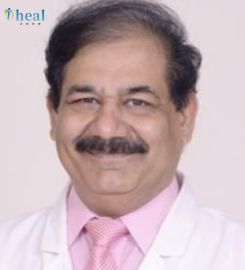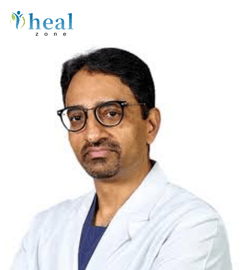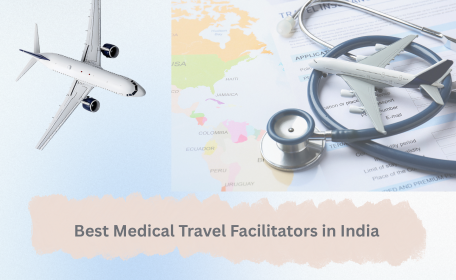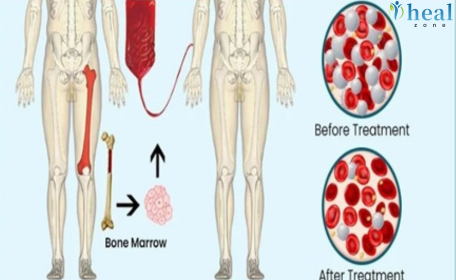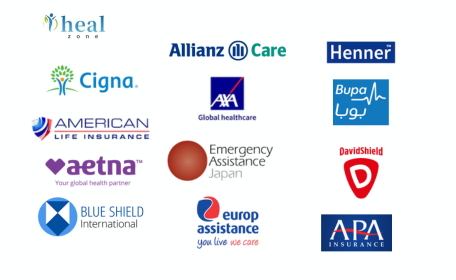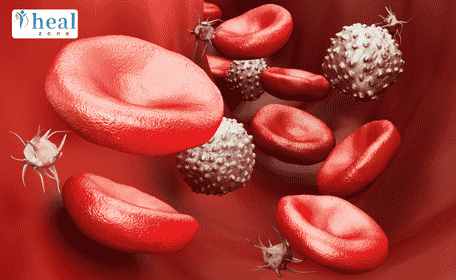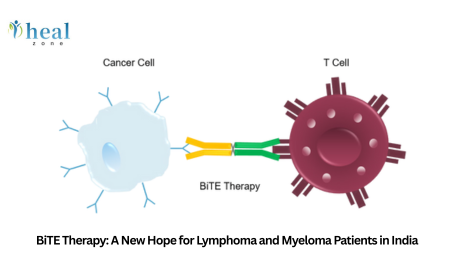What is an AC Joint and What is AC Joint Separation?
The acromioclavicular (AC) joint is the point where the clavicle (collarbone) meets the acromion, the highest part of the shoulder blade. This joint enables arm movement and provides shoulder stability.
AC joint separation happens when the ligaments connecting the clavicle to the scapula are torn or overstretched, causing the collarbone to shift out of alignment. This condition is also known as an AC sprain or shoulder separation (not to be confused with shoulder dislocation, which involves the ball-and-socket joint).
What are the Types and Grades of AC Joint Separation?
AC joint injuries are graded from Type I to Type VI based on severity:
|
Grade |
Description |
Severity |
|
Type I |
Partial sprain of AC ligament (no separation) |
Mild |
|
Type II |
Complete tear of AC ligament, partial CC ligament injury |
Moderate |
|
Type III |
Complete tear of both AC and CC ligaments |
Severe |
|
Type IV |
Posterior displacement of the clavicle |
Very Severe |
|
Type V |
Major displacement with muscle detachment |
Critical |
|
Type VI |
Downward displacement beneath the coracoid |
Extremely Rare |
Types I and II typically heal with non-surgical treatment, while Types IV to VI almost always require surgical repair. Type III is a grey zone, with surgery considered for active individuals or athletes.
Who Needs AC Joint Separation Repair Surgery?
Not every shoulder separation needs surgery. However, surgical repair is recommended in the following scenarios:
Indications for Surgery:
- Grade IV–VI injuries
- Grade III in athletes, manual laborers, or active individuals
- Chronic pain, weakness, or shoulder instability after failed conservative treatment
- Cosmetic deformity (visible collarbone bump) affecting quality of life
- Failure to regain full shoulder function after weeks of rest and physiotherapy
Timely surgery can prevent long-term disability, especially in high-functioning patients.
What are the Symptoms and How is AC Joint Injury Diagnosed?
Common Symptoms of AC Joint Separation:
- Sharp pain at the top of the shoulder
- Swelling, tenderness, or bruising near the joint
- Prominent bump or deformity at the end of the clavicle
- Pain during overhead arm movement
- Limited range of motion
- Muscle weakness or shoulder instability
Diagnostic Steps in Indian Hospitals:
1. Clinical Examination – Observation of the shoulder, range of motion tests, palpation
2. X-rays – Standard imaging to confirm the grade of separation and joint displacement
3. Stress Views – May be done with weights to reveal hidden instability
4. MRI or CT Scan – Used for complex or chronic injuries to assess soft tissues and ligaments
Diagnosis in India is usually quick and accurate, with same-day imaging and surgeon evaluation available at most multispecialty hospitals.
What are the Treatment Options for AC Joint Separation?
Treatment options depend on the grade of injury, age, activity level, and whether the injury is acute or chronic.
Non-Surgical Management (Types I–II, sometimes III):
- Rest, ice, and arm sling immobilization
- Painkillers and anti-inflammatory medications
- Physiotherapy for strengthening and mobility
- Return to normal function in 4–6 weeks
Surgical Treatment (Types IV–VI, some Type III):
- Open Reduction and Internal Fixation (ORIF)
- Ligament Reconstruction using grafts or synthetic materials
- Hook Plate Fixation or Suture Button Techniques
- Arthroscopic-assisted repair (minimally invasive)
Surgical treatment restores joint alignment, strength, and full range of motion, which is crucial for athletes or physically active individuals.
What is the Complete Treatment Protocol for AC Joint Separation Repair in India?
India follows international orthopedic protocols for diagnosis, surgical repair, and rehabilitation of AC joint injuries. Here's a step-by-step guide to the typical patient journey:
1. Pre-operative Assessment
- Consultation with an orthopedic specialist
- Clinical exam and X-ray/MRI
- Grading of separation
- Pre-surgery blood tests and anesthesia evaluation
2. Admission and Preparation
- Admission usually a day before surgery
- Fasting for 6–8 hours prior to surgery
- IV line, antibiotics, and consent documentation
3. Surgical Procedure
- Performed under general anesthesia or regional block
- Duration: 45–90 minutes
- Depending on the injury and surgeon’s preference, the following techniques are used:
Open or arthroscopic approach
Use of suture buttons, hook plates, ligament reconstruction with grafts
4. Post-operative Care
- Pain control with IV or oral medications
- Shoulder immobilizer or sling for 3–6 weeks
- Antibiotics to prevent infection
- Discharge within 1–2 days post-surgery
5. Physiotherapy & Follow-Up
- Begins after 2–3 weeks
- Passive → active exercises
- Full return to activity in 10–12 weeks
Healzone arranges everything from diagnosis to post-op physiotherapy for international patients.
What Are the Different Types of AC Joint Repair Procedures?
Several surgical methods are used depending on the injury grade and surgeon expertise. Indian hospitals offer all internationally practiced options:
Suture Button Fixation (TightRope®/Dog Bone Technique)
- Minimally invasive, arthroscopic
- Strong fixation using braided suture material
- High patient satisfaction
Hook Plate Fixation
- Metal plate with hook under the acromion
- Used in open surgery for acute injuries
- Removed after 6–8 weeks post-healing
Ligament Reconstruction (Weaver-Dunn or Anatomic)
- Used in chronic injuries
- Utilizes tendon grafts (autograft/allograft)
- Recreates coracoclavicular ligaments
Coracoclavicular Screw Fixation
- Temporarily stabilizes the joint using screws
- Requires removal later
Arthroscopic-Assisted AC Joint Repair
- Minimally invasive
- Shorter hospital stay and faster recovery
- Less scarring and pain
Surgeons in India assess each case individually to select the most effective and least invasive technique for optimal outcomes.
What Devices or Implants Are Used in the Surgery?
Indian hospitals use FDA- and CE-approved implants and devices identical to those used in the US or Europe.
Commonly Used Devices Include:
- Titanium or stainless steel hook plates
- Suture button constructs (e.g., Arthrex TightRope® system)
- Cannulated screws
- Tendon grafts (for ligament reconstruction)
- Anchor sutures and interference screws
- Arthroscopy equipment for minimally invasive access
All implants are biocompatible, durable, and sourced from reputable orthopedic suppliers.
What is the Typical Cost of AC Joint Repair Surgery in India?
India offers orthopedic surgical care at 60–80% lower cost than Western countries, with no compromise on quality.
Estimated Total Cost: $2,500 – $4,000
This includes:
- Surgeon’s fees
- Anesthesia
- Operation theater charges
- Implants/devices
- Medications
- Hospital stay
- Physiotherapy sessions (initial phase)
Prices may vary depending on:
- Procedure type (open vs arthroscopic)
- Choice of implant
- Duration of hospital stay
- Hospital location (metros may cost slightly more)
Healzone offers pre-approved all-inclusive packages for international patients, avoiding surprises.
How is the Cost Broken Down into Tests, Surgery, Implants, Medications, Stay, etc.?
Here’s a typical cost breakdown for AC joint repair surgery in India:
|
Component |
Estimated Cost (USD) |
|
Orthopedic Consultation |
$30 – $60 |
|
X-rays / MRI |
$70 – $150 |
|
Pre-op Tests (bloodwork, ECG, etc.) |
$40 – $100 |
|
Anesthesia & OT Charges |
$400 – $600 |
|
Surgical Procedure |
$800 – $1,200 |
|
Implants & Fixation Devices |
$400 – $800 |
|
Hospital Stay (1–2 days) |
$300 – $500 |
|
Medications & Consumables |
$100 – $200 |
|
Physiotherapy (Initial Sessions) |
$100 – $200 |
Total Cost Range: $2,500 – $4,000 (depending on case complexity)
India's pricing is especially attractive for self-paying international patients or those facing long surgical waitlists in their home countries.
Why India is More Affordable:
- Lower healthcare labor and administrative costs
- Competitive pricing of implants and devices
- Shorter waiting times reduce indirect costs (hotel, missed workdays)
- High volume of procedures improves efficiency
For international patients, India offers savings of up to 70% when compared to Western countries.
What is the Recovery Time and Rehabilitation Process After Surgery?
Recovery after AC joint separation repair is gradual and follows a structured rehabilitation protocol to regain strength, motion, and joint stability.
Typical Recovery Timeline:
|
Phase |
Duration |
Focus |
|
Immobilization |
2–3 weeks |
Use of sling, minimal movement |
|
Passive Therapy |
Weeks 3–6 |
Begin physiotherapy, assisted shoulder motion |
|
Active Therapy |
Weeks 6–10 |
Active range of motion, basic strength training |
|
Strengthening |
Weeks 10–12+ |
Sport/work-specific exercises |
Full Recovery:
- Most patients regain 90–100% shoulder function in 12–16 weeks
- Athletes may return to training after 3 months, with precautions
In India, in-hospital physiotherapists guide initial rehab. Healzone also arranges for post-discharge physiotherapy, either in-hotel or via teleconsultation for international patients.
What Are the Benefits of Getting AC Joint Separation Surgery in India?
India has become a top-tier destination for orthopedic surgery, offering a combination of medical, logistical, and financial advantages:
Clinical Excellence
- Board-certified orthopedic surgeons with international experience
- Advanced diagnostic tools (MRI, arthroscopy)
- State-of-the-art operating theaters
Affordability
- 60–80% cheaper than US/UK
- Transparent billing and all-inclusive medical tourism packages
Accessibility
- Quick appointment scheduling
- No long waiting lists
- Medical visa on priority for most countries
World-Class Infrastructure
- NABH/JCI-accredited hospitals
- Dedicated international patient departments
- Multilingual staff for easy communication
Comprehensive Care
- End-to-end coordination through Healzone
- Personalized physiotherapy and recovery support
Why Choose Healzone for Medical Tourism and Treatment Coordination?
Healzone is a trusted partner for international patients seeking affordable, high-quality care in India. Here’s why thousands of patients trust Healzone:
Verified Hospitals
- Partnered with the best orthopedic hospitals across India
- JCI and NABH accredited facilities only
Pre-Negotiated Fixed Pricing
- Clear, all-inclusive packages for AC joint surgery
- No hidden charges or post-arrival surprises
Full Travel & Medical Coordination
- Visa and documentation assistance
- Airport pick-up and hotel coordination
- Language interpreters and 24/7 medical coordinators
Post-Surgical Follow-Up
- Free follow-up video consultations
- Assistance with documentation for insurance claims back home
Patient-First Policy
- Dedicated relationship managers for international patients
- Recovery support in India and after returning to home country
What Precautions Should Be Taken Before and After the Procedure?
Before Surgery
- Inform your surgeon about any medications or health conditions
- Undergo necessary blood tests and imaging
- Avoid smoking and alcohol at least 1 week before surgery
- Arrange for help during initial post-op recovery period
After Surgery
- Follow sling or immobilizer instructions strictly
- Attend all physiotherapy sessions and follow-up visits
- Avoid heavy lifting, driving, or overhead activities for at least 6–8 weeks
- Monitor for signs of infection: swelling, fever, excessive pain
- Stick to the prescribed rehab timeline for optimal results
Healzone provides you with pre-surgery prep guides, post-op care plans, and support through the recovery phase for a seamless healing experience
